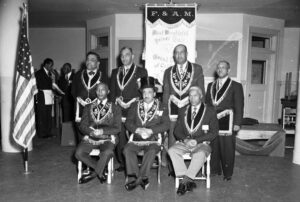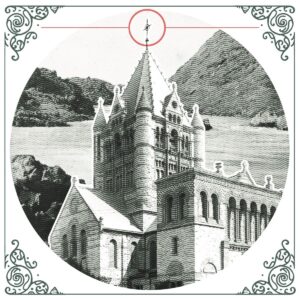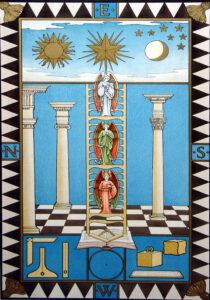
OTHER MASONIC BODIES
A guide to the appendant and concordant bodies, and other Masonic organizations
Freemasonry has inspired many offshoot Masonic groups, which offer a unique extension of the essential member experience. From the playful personality of the Shriners to the expanded degree lessons of the York Rite, the Knights Templar, and the well-known Scottish Rite, here’s an introduction to Masonic appendant bodies and other affiliated organizations.
The Appendant Bodies of Freemasonry
Masonic appendant bodies, sometimes called concordant bodies, are extensions of Freemasonry. To belong to any of them, first, candidates must already have earned the three degrees of Masonry. From there, they have the option to join as many of these organizations as they like. (Several appendant bodies include women who have a Masonic connection.)
Some Freemasons join several such groups because they discover it’s a way to go deeper into an aspect of the fraternity that interests them. Other members prefer to focus their attention on their original blue (or “craft”) lodge. It’s personal to the individual.
Here are some of the best known Masonic appendant bodies in the U.S., from the Scottish Rite and York Rite to the Eastern Star:
- Scottish Rite: If you’ve heard of a 33rd degree Mason, you’ve heard of the Scottish Rite. The organization – which didn’t actually originate in Scotland – offers “high degrees” that expand and elaborate upon the lessons of Masonry’s first three degrees. The group gained pop culture fame with Dan Brown’s novel (and now, streaming series) The Lost Symbol. Learn more.
- York Rite: The order, which is most popular in the United States, is comprised of three bodies: the Royal Arch Chapter, the Royal and Select Master Council, and the Knights Templar Commandery, which is based on the story of the Knights Templar medieval warriors. (Yes, the same Knights Templar sensationalized in Dan Brown’s The Da Vinci Code.) Learn more.
- Shriners International: Ever enjoyed the Shriners’ red fezzes and tiny-car antics in your local parades, or known a child who received care from a Shriners children’s hospital? The Shrine is a Masonic social group with a reputation for fun, and a legacy of high-profile charity work. Learn more.
- Order of the Eastern Star (OES): OES was the first membership organization in the U.S. that gave women a voice on a national scale. It’s open to Master Masons and female relatives, spouses, and descendants of Master Masons. Learn more.
- High Twelve: Along with life lessons, Freemasonry is about friendship. This social club for Master Masons meets regularly to enjoy fellowship and support Masonic causes. Learn more.
- National Sojourners: This organization is designed especially for Master Masons who have served active duty in the U.S. armed forces. Learn more.
- Order of the Amaranth: This coed group is open to Master Masons as well as women who have with a connection to Masonry. Learn more.
- White Shrine of Jerusalem: While all Masonic orders require belief in a Supreme Being, the White Shrine specifically requires belief in Jesus Christ. Its membership is coed, including both Master Masons and women with a Masonic connection. Learn more.
These groups often get together for shared events and to support one another, adding to the friendship and fun that’s at the heart of Freemasonry.
Want to connect with these organizations in California? Check out our list of Masonic orders or appendant bodies in California.
Masonic Youth Orders
In the years following World War I, Masons in the United States helped establish a trio of youth groups, dedicated to young men and women age 10 to 21.
These youth orders remain an important way for young people to get involved in their communities while developing leadership and teamwork skills. More information is available at masons4youth.org.
Other Masonic Orders and Affiliated Organizations
The groups listed below are not formally associated with the Grand Lodge of California, although in some cases they have partnered together.
- Most Worshipful Prince Hall Grand Lodge of California: The traditionally Black fraternity accepts members of all races. Established in California in 1855, today it has lodges across the state.
- Grand Lodge of Iran in Exile: Since the revolution of 1979, Freemasonry has been banned in Iran. Today, the Grand Lodge of Iran in Exile is headquartered in Los Angeles and has lodges in many U.S. states.
- Women’s Grand Lodge of California: With three lodges in Los Angeles, this women’s Masonic group is connected to the United Women’s Grand Lodge Alma Mexicana.
- Grand Orient de France: The largest of several French Masonic bodies, the Grand Orient includes two California lodges: Art et Lumièrein Los Angeles and Pacifica Lodge in San Francisco. Both admit men and women.
- Le Droit Humain, American Federation: Connected to the International Order of Mixed Freemasonry, LDH practices co-ed Masonry, with several lodges in California. Members do not need to express a belief in a deity.
- Women’s Grand Lodge of Belgium: Founded in 1999, Lodge Aletheia No. 32 in Los Angeles is connected to the women’s Masonic lodge in Belgium.
Further Reading
- For Two California Masonic Grand Lodges, A New Beginning
- A Voice During the Women’s Movement: The Order of the Eastern Star
- Of Their Own Free Will and Accord: Women and Freemasonry
- Flying Their Colors
- 99 Steps to a Better Future
- The Purpose of The Order of DeMolay
- 100 Years Later, Still Leaning In
- For Rainbow Girls, a Century of Change








